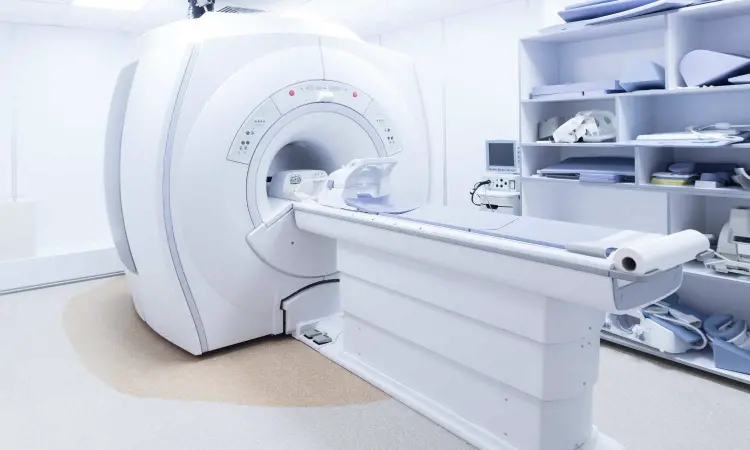- Home
- Medical news & Guidelines
- Anesthesiology
- Cardiology and CTVS
- Critical Care
- Dentistry
- Dermatology
- Diabetes and Endocrinology
- ENT
- Gastroenterology
- Medicine
- Nephrology
- Neurology
- Obstretics-Gynaecology
- Oncology
- Ophthalmology
- Orthopaedics
- Pediatrics-Neonatology
- Psychiatry
- Pulmonology
- Radiology
- Surgery
- Urology
- Laboratory Medicine
- Diet
- Nursing
- Paramedical
- Physiotherapy
- Health news
- Fact Check
- Bone Health Fact Check
- Brain Health Fact Check
- Cancer Related Fact Check
- Child Care Fact Check
- Dental and oral health fact check
- Diabetes and metabolic health fact check
- Diet and Nutrition Fact Check
- Eye and ENT Care Fact Check
- Fitness fact check
- Gut health fact check
- Heart health fact check
- Kidney health fact check
- Medical education fact check
- Men's health fact check
- Respiratory fact check
- Skin and hair care fact check
- Vaccine and Immunization fact check
- Women's health fact check
- AYUSH
- State News
- Andaman and Nicobar Islands
- Andhra Pradesh
- Arunachal Pradesh
- Assam
- Bihar
- Chandigarh
- Chattisgarh
- Dadra and Nagar Haveli
- Daman and Diu
- Delhi
- Goa
- Gujarat
- Haryana
- Himachal Pradesh
- Jammu & Kashmir
- Jharkhand
- Karnataka
- Kerala
- Ladakh
- Lakshadweep
- Madhya Pradesh
- Maharashtra
- Manipur
- Meghalaya
- Mizoram
- Nagaland
- Odisha
- Puducherry
- Punjab
- Rajasthan
- Sikkim
- Tamil Nadu
- Telangana
- Tripura
- Uttar Pradesh
- Uttrakhand
- West Bengal
- Medical Education
- Industry
Novel technology developed for faster MRI scans and for increasing clinical applications

Nicholas Dwork, PhD, assistant professor in the Department of Biomedical Informatics at the University of Colorado School of Medicine, has filed a provisional patent for a technology that could increase scan speeds of three-dimensional magnetic resonance imaging (MRI). The invention could lead to faster results, increase the clinical applications of MRIs, and ultimately improve patient care.
Complex mathematics and engineering are involved in generating images of internal organs and tissues when patients enter the magnetic tube of an MRI machine. Any movement by the patient can corrupt the images, and the scan can take an hour or longer. During this time, the machine makes loud noises as radio waves reverberate off bodily structures to create images. Because the field of view-the part of space that is imaged-is typically rectangular, the radio waves also bounce off areas outside the body. This is where Dwork's technology comes into play.
"Suppose you knew nothing at all about the image you were trying to make," Dwork says. "In that case, you would need a maximum amount of information in order to make the image, which means collecting a maximum amount of data. How can we reduce the amount of data we need? If we had more information about the picture we were making, then we wouldn't need as much data."
His method adjusts the sampling pattern created by the machine's magnetic fields.
"They're called pulse sequence diagrams," Dwork explains. "Think of the MRI as a musical instrument. Much like a musical instrument, they can play different songs. You might think of it as sheet music for the MRI machine."
He collaborated with faculty in the Department of Radiology to develop applications for the programming and will continue to refine the technology through his own research.
"Primarily, this means combining this particular method of making MRI faster with other technologies to make scanning extremely fast," he says. "These other technologies include what is known as partial Fourier sampling, parallel imaging, compressed sensing, and deep learning."
Dwork estimates that his approach to MRI scans could reduce times by about 25 percent, enabling doctors to get results faster and reducing patients' time in the MRI tube. He envisions the faster scans being used for a multitude of purposes, potentially expanding MRI use to very young children and pregnant patients. He hopes to research its application to twin-to-twin transfusion syndrome, a rare condition in which twin fetuses share one placenta and a network of blood vessels. A fast, accurate MRI can guide a surgeon in cauterizing the blood vessels in the placenta to address the condition and improve outcomes for the fetuses.
Dwork, who has focused on applying advanced mathematics to medical problems throughout his career, says his work wouldn't be possible without the support he's found at CU. As a member of the Affiliate Faculty Program of the Applied Mathematics Department at CU Boulder, he gives presentations on medical problems to the math department while also bringing novel mathematical insights to CU Anschutz Medical Campus. He's also working with CU Innovations, the technology commercialization and venture development office at CU Anschutz, to market the invention to imaging companies and developing research in the clinical setting.
"For the type of work that I like to do, which is applying advanced mathematics to medical problems, CU Anschutz is the perfect place to be," he says. "I'm extremely grateful to the Department of Biomedical Informatics for giving me this professional opportunity and providing me with so many resources to maximize the probability of my success."
Dr Kamal Kant Kohli-MBBS, DTCD- a chest specialist with more than 30 years of practice and a flair for writing clinical articles, Dr Kamal Kant Kohli joined Medical Dialogues as a Chief Editor of Medical News. Besides writing articles, as an editor, he proofreads and verifies all the medical content published on Medical Dialogues including those coming from journals, studies,medical conferences,guidelines etc. Email: drkohli@medicaldialogues.in. Contact no. 011-43720751


